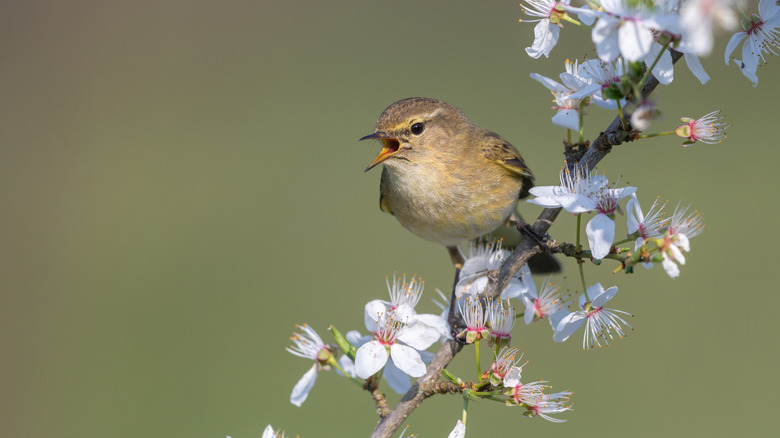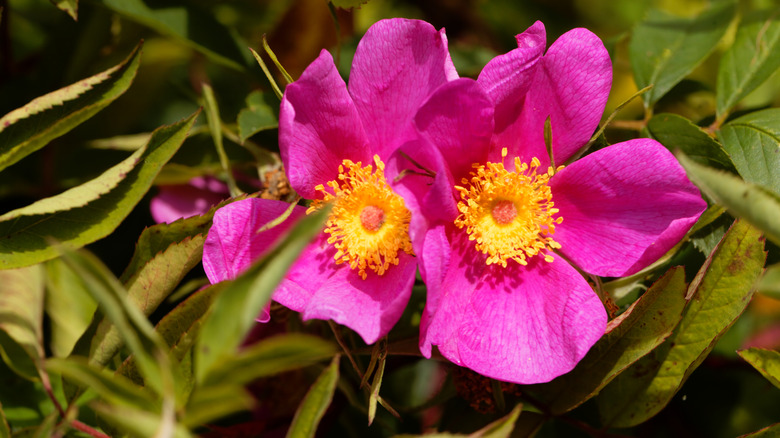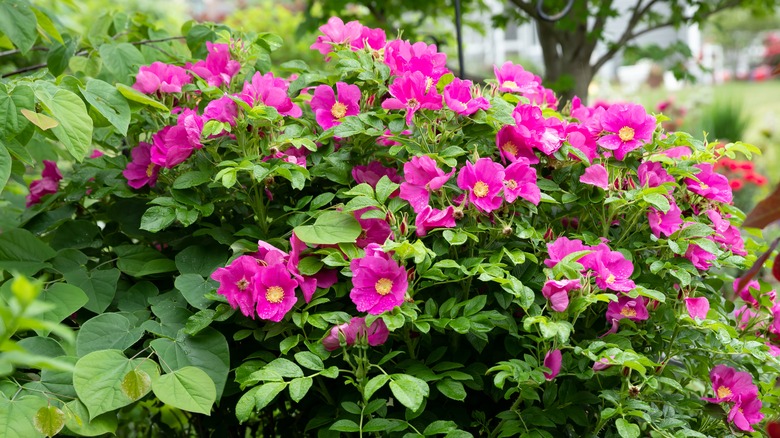Add Privacy To Your Backyard With A Flowering Shrub That Birds & Pollinators Love
Ever since we stopped hunting and gathering millennia ago, we've sought to create beautiful green spaces around our homes. There's evidence that the Romans, Egyptians, Persians, as well as the people of ancient India and China, carved out dwellings from the wilderness and filled the areas around them with lush greenery, walking paths, and ornamental features. Pollinators such as bees and butterflies followed, enriching the environment even more. Fast forward a few thousand years and we're still craving private outdoor places that invite rest and relaxation but also enhance our homes. While we enjoy beautifully curated formal public gardens, at home, the key to true peace and quiet is privacy.
You may love flowering shrubs that will bring drama (and pollinators) to your yard, and also already know which shrubs and bushes to plant for privacy in your yard. So if you're thinking about adding a fence for privacy, consider your budget, zoning laws in your area, and the aesthetic of installing a solid wall of stone, metal, or wood around your backyard. An alternative might be a living fence like the native rose: the Carolina rose, sometimes called a prairie or pasture rose. This easy-to maintain shrub will not only enhance your backyard, add privacy, but also will offer birds, caterpillars, and more bugs and beasts a flower they will love.
A living hedge
A member of the rose family, the Carolina rose is a shrub that's not nearly as fussy as its hybrid cousins. The attractive flowers, pink petals with a yellow center, bloom through most of the summer and emit a pleasant rose-lemon fragrance. It prefers a sunny spot but will live with some shade. Plant several shrubs in a row to create a living hedge — literally a wall of flowers with prickly stems and deep, green leaves that block the view but allows air and light to flow through.
The prairie rose will grow to a height of 3 feet or more and create a dense hedgerow that attracts birds and butterflies, and also provides nesting material for bees. The shrub is particularly enticing to blackbirds and thrushes, as well as cottontail rabbits and chipmunks that will all eat the rose hips. However, the plant is deer resistant. In case you'd like to taste one yourself, the hips of the Carolina rose are high in vitamin C and can be used to make jelly or tea.
How to plant and grow
The Carolina rose is not only beautiful but flexible. It grows in zones 2 to 9 which include much of the midwestern and mid-Atlantic U.S. It will flourish in clay, loam, or sandy soil with medium moisture and good drainage. Six hours of sun each day is best, though less sun means fewer blooms. This rose can be trained to grow in a mound or a trailing shape. Planted along a trellis, wall, or other support, it will grow up to 15 feet high and create a blooming surface most of the year. In autumn the leaves turn deep red or purple in autumn.
For optimum growth, plant your roses 2 to 3 feet apart. These roses spread through rhizomes, which are roots that grow horizontally underground, so keep an eye on your roses in case they start spreading out too much. A stunning companion to the prairie rose is this fresh-smelling vine for added privacy in your backyard, the star jasmine, which also offers beauty and fragrance.


